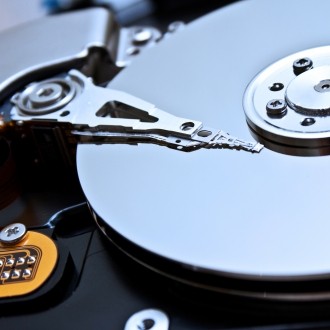HGST, a storage firm born from the merger between Hitatchi Global Storage Technologies and Western Digital, claims to have developed self-assembling methods for producing dense magnetic storage drives. Its advancements could more than double the capacity of today's mechanical storage drives.
The company says its process involves three discoveries: self-assembling molecules, line-doubling and nanoimprinting and does not require conventional photolithrography.
Researchers say they can produce magnetic "islands" which are only 50 atoms wide, or about 10 nanometers, using molecular self-assembly. HGST can combine this process with line-doubling and improved nanolithorgraphy (nanoimprinting) techniques to reliably create impressively dense storage.
In HGST's research, self-organizing molecules are stopped just short of lumping together thanks to the presence of additional co-polymers which actually repel each other. When the mixtures is applied as an extremely thin film to a specially treated surface, the effect causes self-assembling molecules to be spaced out and lined up in perfect rows. This process is what creates magnetic "islands" which can be used to represent binary states – and it does so with finer precision than traditional methods, yielding an incredibly dense pattern. Those islands are then doubled using a chip-industry process known as line-doubling.
Self-assembling co-polymers aren't exactly new, but according to HGST, forming them into concentric rings usable by mechanical disk drives is an industry first. The result is a drive substrate peppered with twice the magnetic elements found on typical drives, effectively doubling its potential storage capacity. However, HGST believes its processes can be refined to produce even denser storage, more than doubling their capacity in the future.
There is no roadmap provided, so when exactly this technology may end up in the hands of consumers remains unknown. However, the press release states its advancements may, "become a cost-effective means of increasing data densities in magnetic hard disk drives before the end of the decade."
